By Rob Krott
Operation Stösser was launched during Germany’s last gamble: Wacht am Rhein (Operation Watch on the Rhine), Hitler’s offensive in the West which Americans know as the Battle of the Bulge, had as its ultimate objective the Belgian port of Antwerp. Recently captured, it was under repair to be reopened as a deep-water port.
When Antwerp was serviceable, the Allies would be able to bring supplies and reinforcements quickly to the front lines instead of transporting them across France from the Channel ports. To reach Antwerp, the German Army would push through the Ardennes Forest. An armored spearhead would attack in the Eifel plateau region of western Germany, lying between the Rhine and Moselle Rivers and the Luxembourg and Belgian frontiers.
Contiguous with the Ardennes and the Hohes Venn of Belgium, the German Eifel plateau falls into three distinct ridges or ranges, the central near the Belgian frontier being called the Schnee Eifel. The Ardennes, an area of heavily wooded rolling hills where Belgium, Germany, and Luxembourg meet, was also the dividing line between the British forces in the north and the American forces in the south. The German High Command knew Antwerp could not be reached with the forces and materiel at their disposal and pleaded with Hitler for a more modest objective. But Hitler insisted on the plan. He believed the offensive would split the Allied forces attacking Germany’s borders. Hitler vainly hoped that once the Allies were separated they could be destroyed individually. After turning back the Allies, he could then send more men to the Eastern Front.
A Formidable Force, Built in Secrecy…
During the German offensive of 1940, the panzers had bypassed the heavily fortified Maginot Line guarding the French frontier and rolled into the Low Countries. In 1944, however, things were different. Germany’s once victorious armies were in retreat on all fronts. Germany’s borders were threatened, and the American Army already occupied the German city of Aachen, the ancient city of Charlemagne and one-time capital of the Holy Roman Empire.
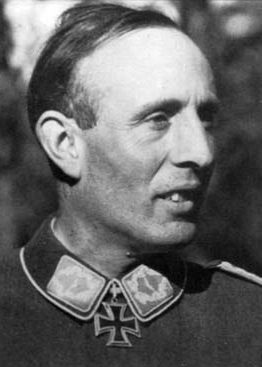 The Western Front in December 1944 stretched for 450 miles. The offensive was to take place on 85 miles of the weakest held sector from Monschau in the north to Echternach in the south, defended by battle-weary U.S. troops carrying out rest and refitting on the “ghost front.” The last thing they expected was a major German offensive. Experienced German units likewise were being rested, refitted, and reformed. Unknown to the Americans, a formidable force was being secretly assembled just behind the German front line.
The Western Front in December 1944 stretched for 450 miles. The offensive was to take place on 85 miles of the weakest held sector from Monschau in the north to Echternach in the south, defended by battle-weary U.S. troops carrying out rest and refitting on the “ghost front.” The last thing they expected was a major German offensive. Experienced German units likewise were being rested, refitted, and reformed. Unknown to the Americans, a formidable force was being secretly assembled just behind the German front line.
The front was fairly quiet, with Allied attacks into the Fatherland being contained, but back in Germany towns and cities were emptied of all available men to form the new Volksgrenadier divisions that would comprise the bulk of the forthcoming offensive. With the draft age lowered to 16 years and extended to include 50-year-olds, this was one of a series of drastic “Total War” measures designed to supply the German Wehrmacht with troops for a final counteroffensive. An additional 750,000 men were called up to form a new strategic reserve of 25 Volksgrenadier divisions and at least six panzer divisions.
Germany Becomes Desperate for Soldiers
These were not the soldiers of the victorious 1940 Wehrmacht. After five years of war on multiple fronts, the Germans were scraping the bottom of the barrel. The Waffen-SS already had units made up of Croats, Bosnian Muslims, and Cossacks, as well as Freiwilligen divisions of non-German European volunteers. Wehr- macht units composed of Soviet soldiers recruited from the POW camps had already seen combat in the Normandy campaign.
The Volksgrenadier divisions were largely staffed by non-infantry personnel including surplus Luftwaffe and Navy rear-echelon types. These levies were quickly trained in basic infantry tactics and issued Army uniforms. The 18th Volksgrenadier Division under the command of Generalmajor Gunther Hoffmann-Schonborn patrolled the Schnee Eifel area and was largely typical of these new polyglot and inexperienced divisions. Formed in Denmark in September 1944, from the remains of the 18th Luftwaffe Field Division (destroyed earlier in the Mons pocket fighting), it comprised 9,500 men, mostly untrained civilians, unassigned naval personnel, and Air Force ground crews, assigned in three grenadier regiments. Reconstructed from Luftwaffe and Navy units, plus a strong mixture of Volksdeutsche (persons of German descent) and civilian draftees drawn in by the new draft laws, the 18th Volksgrenadier Division lacked trained noncoms and officers, averaging only one officer and one noncommissioned officer per company.
Field Marshal Gerd von Runstedt, Commander in Chief West, would command Wacht am Rhein—also referred to as Operation Herbstnebel (Autumn Mist). He had three Army Groups—H, B, and G—to execute the offensive. Army Group B, under the command of Field Marshal Walther Model, would carry out the main attack, and the Sixth (later SS) Panzer Army would spearhead the offensive. The Sixth Panzer Army was strengthened with four SS panzer divisions, four of the new Volksgrenadier divisions, and the 3rd Parachute Division, recently reconstituted after its severe losses in Normandy.
Parts of the 3rd Parachute Division had been fighting in the Düren forest in the south before being sent north to join the Sixth Panzer Army. The 3rd Parachute Division’s 5th, 8th, and 9th Regiments would all take part in the offensive. They were to head west, clearing the way for the armored spearhead of the Sixth Panzer Army, a Panzer Kampfgruppe (battle group), Kampfgruppe Peiper, under the command of SS Sturmbannführer (Major) Jochen Peiper. The 3rd Parachute Division, part of the 1st SS Panzer Corps, and the 5th Parachute Division, which was part of the German 7th Army, were to be used as infantry, not airborne assault troops, in the operation.
The battle plan also called for a small parachute drop in the Ardennes. Kampfgruppe von der Heydte would make a parachute assault into the Ardennes to secure key terrain on December 17.
The Battle School of the First Parachute Army
On December 8, Generaloberst (Colonel General) Kurt Student, commander of Army Group H and former commander of the German airborne forces, was given eight days’ notice to launch an airborne attack in support of the Sixth Panzer Army. He immediately chose Oberstleutnant (Lieutenant Colonel) Friedrich-August Freiherr (Baron) von der Heydte, a Bavarian-born aristocrat, to organize a battalion-sized unit of Fallschirmjaeger (paratroops) and lead the parachute assault codenamed Operation Stösser (Falcon). Oberstleutnant von der Heydte would form a composite parachute battle group consisting of a hundred men from each battalion within the First Parachute Army under the command of Generaleutnant Eugen Meindl, which was subordinated to Army Group H. He would then organize these men into four infantry companies, a heavy weapons company, and a pioneer and signals platoon.
Student’s choice was a good one. Von der Heydte, who began the war as an antitank company commander, had volunteered for the airborne in August 1940. By December 1944, he was a highly decorated former commander of the 1st Battalion, 3rd Parachute Regiment and 6th Parachute Regiment, and was the commander of the Battle School of the First Parachute Army in Aalten, Germany. Kampfgruppe von der Heydte would assemble in Aalten and then report to General Model’s Army Group headquarters on December 15.
Von der Heydte would have to gather a force of over a thousand men, drop them deep behind American lines in the Germans’ first and only operational night jump, and capture a series of important road junctions in the Hohes Venn leading from the Elsenborn-Malmedy area toward Eupen for the armored spearhead units. The German paratroopers would then block the enemy’s reinforcement route through the Schnee Eifel south of the Elsenborn area.
The drop zone was approximately 11 kilometers north of Malmedy in the Monte Rigi area of the Schnee. The objective was a main road junction that led to Verviers, Eupen, and Malmedy—the main route for any American reinforcements being rushed into the area. Von der Heydte was to hold the road junction until met by the 12th SS Hitlerjugend (Hitler Youth) Division, the lead element of the Sixth Panzer Army. If the mission was delayed by 24 hours their secondary objective was to secure the bridges crossing the Ambleve River until met by Sixth Panzer Army armored units. Von der Heydte was told that the German armor would reach him within 24 hours.
A Ragtag Army Of One in Five Trained
With only a week to prepare, Student ordered each of the battalion commanders of the First Parachute Army to send von der Heydte a hundred of their best men. Unfortunately for the Germans, the Fallschirmjaeger of 1944 were not the highly trained soldiers who jumped onto Fort Eben Emael in 1940 or Crete in 1941. Many of them were not even parachute-qualified. On D-day there were 150,000 men in the Fallschirmtruppen, but only 30,000 were actually trained parachutists. And worse yet, some of the parachute regimental commanders dumped their undesirables, including some inexperienced soldiers fresh from basic training, on von der Heydte rather than sending him their best men.
Von der Heydte had to send 150 men back to their units as unsuitable candidates. He had only a few men with previous combat jump experience and only about 20 percent of his composite unit was qualified to jump with weapons, so containers had to be used. The operation would be a night jump.
After 1943, the requirements for the award of the paratrooper’s insignia upon the completion of basic parachute training included at least one night jump. But this would be the first and only nighttime combat jump. They would also jump into the woods, something the Germans had practiced in training. The preparations for Operation Stösser were rushed. The Fallschirmjaeger were issued additional equipment, and some received hasty jump training. There was little time for any training or organization as a cohesive unit. To complicate matters, von der Heydte’s transport of about a hundred Junkers Ju-52s were piloted by mostly young and inexperienced crews.
“This Is An Army, Not a Zoo!”
Von der Heydte was under the command of SS Oberstgruppenführer (General) Josef “Sepp” Dietrich, commander of the Sixth Panzer Army, which was to provide the main armored thrust in Operation Wacht am Rhein. Sepp Dietrich, the former butcher’s apprentice and Nazi beer-hall putsch participant, came from a Bavarian peasant family and was a marked contrast to his fellow Bavarian, Baron von der Heydte. Dietrich, a close confidant of Hitler, had risen to high rank as a reward for leading the squad that assassinated Storm Trooper (SA) leader Ernst Rohm during the infamous Night of the Long Knives.
When von der Heydte conferred with his commander, Dietrich’s headquarters could provide neither photographs nor reconnaissance of the drop zones. When asked if he could have carrier pigeons in case of radio problems, Dietrich, drunk at the time, replied, “This is an army not a zoo! If I can run a panzer army without pigeons then you should be able to lead a Kampfgruppe without them.” Operation Stösser would get 300 straw-filled paratrooper dummies attached to old parachutes. They would be dropped along with the Fallschirmjaeger to make the unit look bigger than it actually was.
Von der Heydte received his final briefing at Sixth Panzer Army headquarters on December 15. The time of the drop or P-hour (Parachute Hour) was set for 0200 on the 16th. He had only 12 hours to issue his orders for the jump. His composite unit of mostly inexperienced paratroopers would make a night combat jump behind enemy lines, without prior reconnaissance, under inclement weather conditions, and in high winds. Von der Heydte did not rate his chances of success as high. On the evening of December 15, he formed his unit to load on trucks for the move to the airfield. By midnight, only about a quarter of the paratroopers had reached the airfield at Paderborn due to lack of sufficient truck transport. Gasoline for the trucks to carry the paratroopers to the airfields was stolen by another division.
Because von der Heydte was related to Colonel Klaus von Stauffenberg, the staff officer who had attempted to assassinate Hitler on July 20, 1944, the Sixth Panzer Army began a formal investigation, thinking von der Heydte had deliberately sabotaged the operation. The parachute operation was delayed, but Wacht am Rhein went ahead as planned. In the center and the south the Fifth and Seventh Armies made good progress, but in the north the Sixth Panzer Army’s advance bogged down when its armored columns encountered heavier than expected resistance and became backed up on the narrow forest roads.
Trial by Fire for the Inexperienced
Regardless of the lack of progress, the parachute drop was still on. German radio intercepts confirmed that American reinforcements were being rushed to the front. Although delayed until 0300 on the 17th, von der Heydte’s mission was still to secure the main road junction near Malmedy and stop the American reinforcements.
With Kampfgruppe von der Heydte finally assembled on the airfields, the Fallschirmjaeger loaded 112 Ju-52s. The pilots and jumpmasters were given instructions for the drop, but had no joint training. Flown by an ill-assorted group of pilots, half of whom had never flown combat missions, the Ju-52 transports lifted off at midnight on December 16.
Several navigational aids were used to assist the inexperienced Ju-52 crews, including searchlights and tracer fire from antiaircraft guns. Once the transports crossed over the Allied lines, they began to lose formation due to inexperience and partly due to a strong headwind, which many pilots did not take into account. Allied flak further dispersed the aircraft formations, throwing some pilots miles off course.
A Messerschmitt fighter dropped flares a few minutes before P-hour to mark the drop zone, but only a few of the pilots saw them. As von der Heydte later wrote: “Cooperation with pathfinders in night jumping requires the most accurate timing. Because of incorrect wind data, the pathfinders in the Ardennes operation arrived at the drop zone almost a quarter of an hour too early. In this way not only was the American air defense warned in advance, but the last transport planes were no longer guided and had to drop their men blindly.”
One in Ten Did Not Survive the Drop
The jump was a total disaster. The German paratroopers were scattered across the Belgian countryside. Many of them were dropped miles from the original drop zone, and some even landed in Holland. Only 10 of the transports, including von der Heydte’s, actually made it to the drop zone. One rifle company was dropped behind the German lines 50 kilometers away from the drop zone. Most of the signal platoon with the unit’s radios fell just in front of the German positions south of Monschau. With a drop zone in the woods and ground winds of 36 miles per hour (normally German paratroops were only able to jump with ground winds less than 14 miles per hour), the casualty rate on the drop was over 10 percent. Some of the Fallschirmjaeger, killed on landing, were not found until the spring thaw months later. The survivors and other German parachute troops were so bitter over the lack of training and preparation and the high casualty rate that an article in the December 22, 1944, edition of Nachrichten Fur Die Truppe (the German equivalent of the Stars and Stripes) was entitled “Operation Mass Murder.”
The German equipment was also largely at fault. They probably fielded the worst parachutes used in WWII. Because of the German parachute design, the high ground winds were especially dangerous for the Fallschirmjaeger. According to von der Heydte: “The German parachute fell short of requirements. It caused an excessive swinging motion in gusty weather, it was hard to control, and too much time was required to get out of the harness. Too much importance was probably attached to safety in jumping and too little to suitability for combat operations. The casualties which were sustained from enemy action because the soldier was unable to free himself from his harness quickly enough were far greater than the casualties which might have been caused by carelessness in opening the single-fastening harness release in the air.”
The German RZ (Ruckenpackung Zwangauslosung “rucksack packed to open”) series of parachutes (primarily the RZ-16 and the RZ-20) had a single strap between the back of the body harness and the chute. This resulted in a face-down position requiring knee and elbow pads and a forward roll upon landing and led to many landing injuries. To allow for proper deployment, the paratrooper had to leap forward in a swan dive or “crucifix position” when exiting an aircraft. Control during the descent was almost impossible except for a highly trained, physically adept paratrooper. Even then only a slight bit of control was possible.
The forward-roll landing also prevented the parachutist from carrying much equipment on his body. Except for pistols, grenades, and the occasional submachine gun, German paratroopers had to rely on containers for their main combat equipment and weapons. The parachute canopy was attached to the harness with four clips, one at each thigh and two on the left chest, that were difficult to undo when under fire or when the trooper was being dragged by the wind. Because of this, the Germans issued each Fallschirmjaeger a gravity knife to cut the parachute risers in an emergency.
“By Dawn I Had Collected 125 Soldiers—a Little More Than a Tenth of the Kampfgruppe.”
During Operation Stösser it was snowing heavily, the winds were heavy, and many were dragged across the drop zone, causing injuries. Some of the injured would die of exposure in the harsh weather conditions. Because he was recovering from an accident, von der Heydte’s left arm and shoulder were still in a splint, so he jumped wearing a captured Russian “triangular” parachute. It suffered less oscillation on descent than German designs and was steerable, so he could pick his landing site and avoid further injury. He injured his right arm in the jump anyway.
Three hours after the drop only about a hundred Fallschirmjaeger had linked up with their commander in the assembly area at the fork in the Eupen road north of Monte Rigi. By the morning of the 17th, von der Heydte had assembled only a company’s worth of Fallschirmjaeger, some of whom were injured. According to von der Heydte, “By dawn I had collected 125 soldiers—a little more than a tenth of the Kampfgruppe.” With only a fraction of his unit available for action, von der Heydte formed a defensive perimeter in the woods and sent out small patrols to pick up information, ambush any American units they encountered, search for their missing weapons containers, and gather stragglers.
Because of the difficulty in jumping with weapons while using an RZ parachute, only a small percentage of the men had jumped with their weapons and most of the weapons containers were lost during the drop. Many of them had no rifles. The signals platoon with the unit’s radios was still 50 kilometers away.
Too Close for Comfort for the Fallschirmjaeger
Von der Heydte was about eight miles from the German ground forces but had no way to contact them. Reconnaissance patrols were sent out to make contact with elements of the Sixth Panzer Army. Many never returned. Those who did return had been unsuccessful. By the evening of December 17, von der Heydte had made contact with another 150 scattered stragglers of his composite battalion, but he still did not have an effective fighting force. Although his patrols found more stragglers, with no more than 350 men, no support weapons, no fire support, and no radio communications, he spent the day lying low and continued sending out small patrols. It was now too late to carry out the planned operation of blocking American reinforcements, even if the operation had gone nearly according to plan.
The day after the drop, a group of Fallschirmjaeger had a very close call. They were resting in a ditch when a very large convoy of American vehicles drove by. It was a column from the American 1st Infantry Division, the Big Red One, but the Americans, thinking that the Germans were other Americans, merely waved. The other German Fallschirmjaeger hid in the woods and watched helplessly as the reinforcements they were supposed to stop rolled past.
German patrols captured a few prisoners, including a motorcycle dispatch rider carrying the operations orders for the U.S. Army’s XVIII Airborne Corps, but had no way to process them to the German rear or keep them, so they were sent back to the American lines with the German wounded. Von der Heydte sent a personal note to the 101st Airborne Division commander, Maj. Gen. Maxwell Taylor, whom he knew by reputation from the fighting in Normandy, asking the paratrooper general to care for the wounded Fallschirmjaeger.
A Favor for Enemies
The aristocratic von der Heydte could count on the Americans to care for his wounded. Earlier that year, on July 4, during the Normandy campaign, the 6th Fallschirmjaeger Regiment commanded by von der Heydte (then a major) had halted an attack of the U.S. 83rd Infantry Division, inflicting very heavy casualties on its 331st Infantry Regiment. The division lost nearly 1,400 men during its attack south of Carentan toward Periers. Major von der Heydte returned captured American medics along with a note to Maj. Gen. Robert C. Macon, the division commander, saying that he thought Macon probably needed them.
In the note von der Heydte also requested that, if the situation were ever reversed, he hoped General Macon would “return the favor.” A three-hour cease-fire was called during which 16 seriously wounded Americans were evacuated in addition to those recovered from German aid stations and wounded Fallschirmjaeger in American aid stations were turned over to German medics. Fallschirmjaeger located other wounded on the battlefield for the American medics. The chivalry of von der Heydte’s Fallschirmjaeger was widely known since the American press published an account of the incident.
Without success, the Luftwaffe tried to re-supply the paratroopers, who were in desperate need of weapons, ammunition, food, warm clothes, and medical supplies. However, they received only one container filled with cheap brandy and damp cigarettes. Von der Heydte’s situation was critical: He had no contact with the Sixth Panzer Army, he had many wounded, and the Americans were closing around them. With his unit nearly surrounded, he decided to send his wounded and unfit back to where he thought the German front line was.
Operation Stösser’s Continuing Failure for the Fallschirmtruppen
The remaining paratroopers were organized into an assault group to break through the Allied encirclement. The breakout attempt failed, and the Fallschirmtruppen took heavy casualties. On December 21, von der Heydte organized the survivors into small groups of two to three men and ordered them to attempt to reach the German lines he believed to be at Monschau.
Von der Heydte, his adjutant, and his orderly moved out in the direction of Monschau, believing it to be in German hands since it was a first-day objective of Operation Wacht am Rhein. But Monschau was not in German hands. It was occupied by a U.S. Army engineer battalion. Von der Heydte was in bad shape. The pain from his shattered left forearm and the injury to his right arm suffered during the jump became unbearable. On December 23, he ordered his companions to leave him. Entering the outskirts of Monschau alone, he rested in a local house. He stayed there for a couple of days trying to recover before he asked a local resident to contact the Americans. Their headquarters were in a hotel in the town. Von der Heydte, commander of the only German night combat parachute jump in history, surrendered.
Kampfgruppe von der Heydte’s mission failed to achieve its objective of seizing the key crossroads and delaying American reinforcements. But Operation Stösser, the last large- scale German parachute drop of the war, should not be dismissed as a complete failure. The presence of German paratroopers behind the Allied lines caused alarm among the troops and the higher echelons. The dummy Fall- schirmjaeger—probably the most successful aspect of the entire operation—were dropped north of Camp Elsenborn and confused the Americans. Because the Fallschirmjaeger were scattered over such a vast area in the drop and isolated units engaged the Allies, their number was greatly overestimated.
“In Short, Almost Every Prerequisite of Success Was Lacking…”
Initially it was thought that whole divisions were dropped instead of a scattered battalion. This, combined with the presence of SS Colonel Otto Skorzeny’s English-speaking commandos driving American jeeps behind the lines while wearing American uniforms and the initial success of the offensive, had a tremendous psychological effect on the American units in the Ardennes. The reports of enemy paratroopers resulted in numerous alerts in the American rear areas. The Fallschirmjaeger succeeded in altering the deployment of American troops from reinforcing the front, forcing them to search for German paratroopers. This helped to tie up the American reserve for a few days.
Von der Heydte summed it up best: “The airborne operations connected with the Ardennes offensive were definitely a failure. The force committed was far too small … the training of parachute troops and troop-carrier squadrons was inadequate; the Allies had superiority in the air; the weather was unfavorable; preparations and instructions were deficient; the attack by ground forces miscarried. In short, almost every prerequisite of success was lacking… At that time the Wehrmacht was so hopelessly inferior to the enemy in manpower and materiel that this operation can hardly be justified and is to be regarded only as a last desperate attempt to change the fortunes of war.”
After the war, von der Heydte went on to become a general in the West German Bundeswehr before passing away on July 7, 1994.
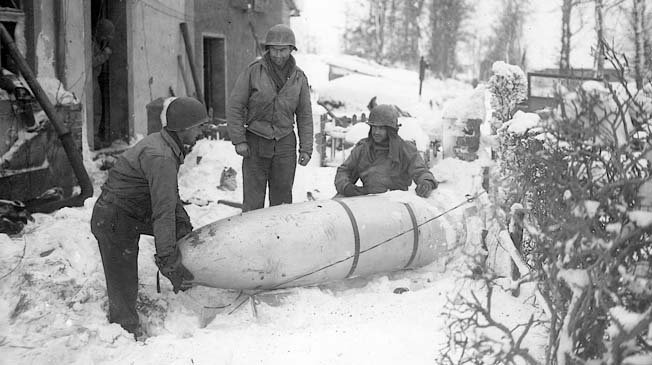
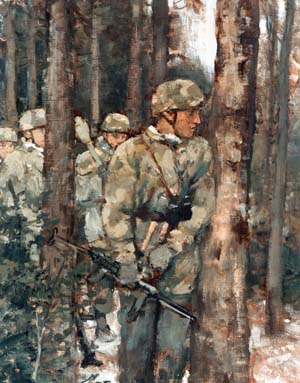
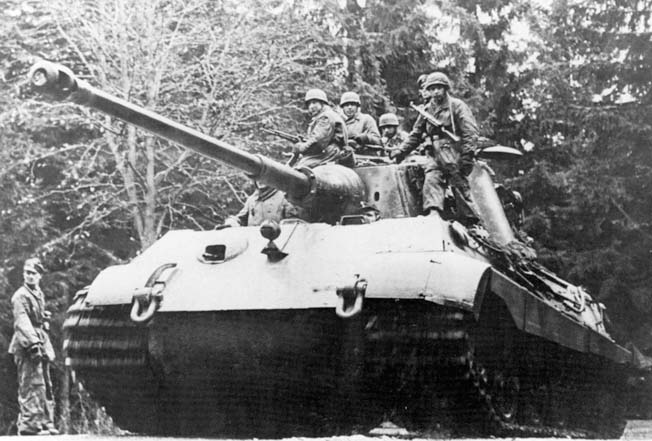
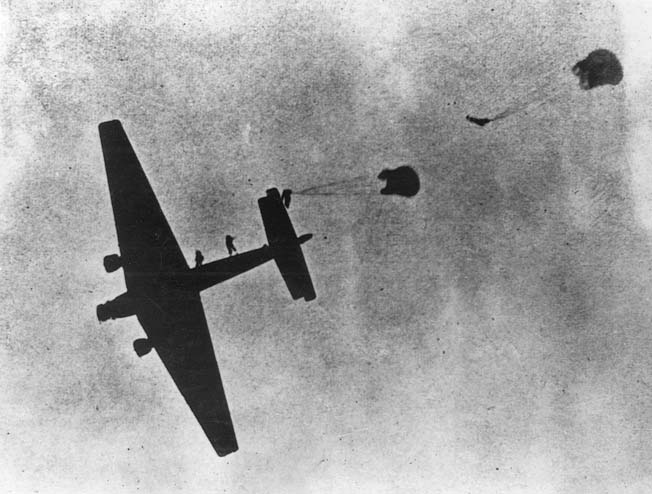
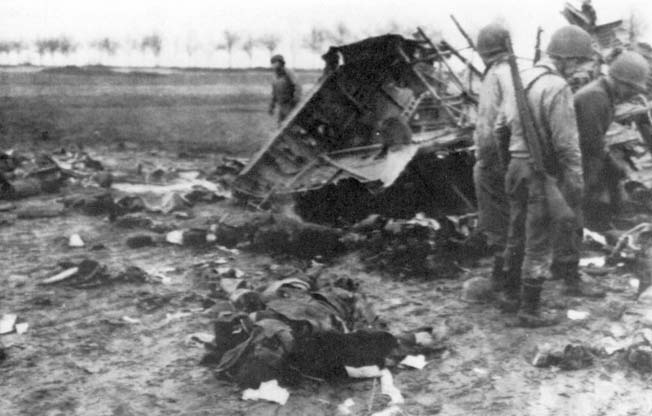
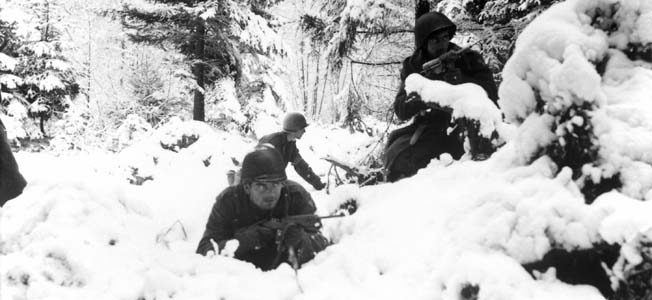
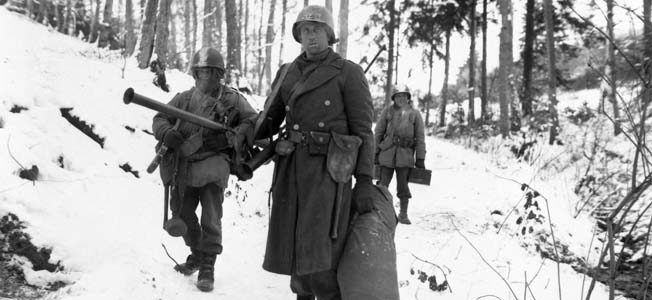
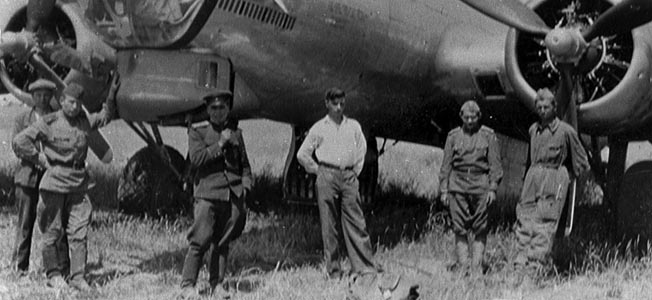
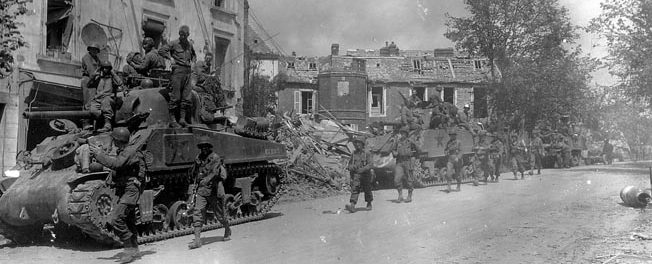
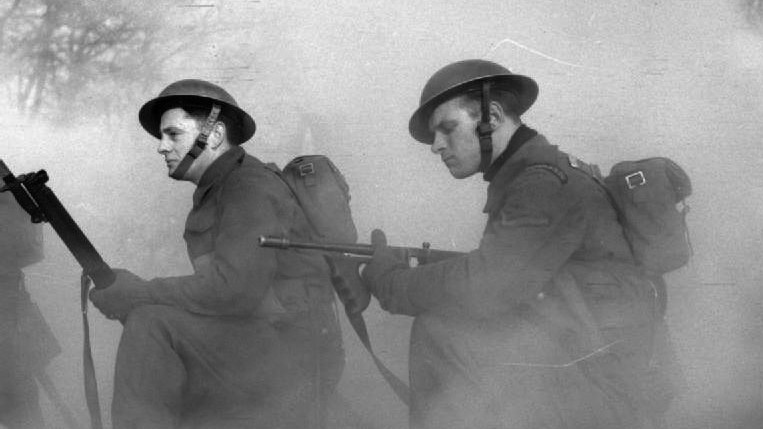
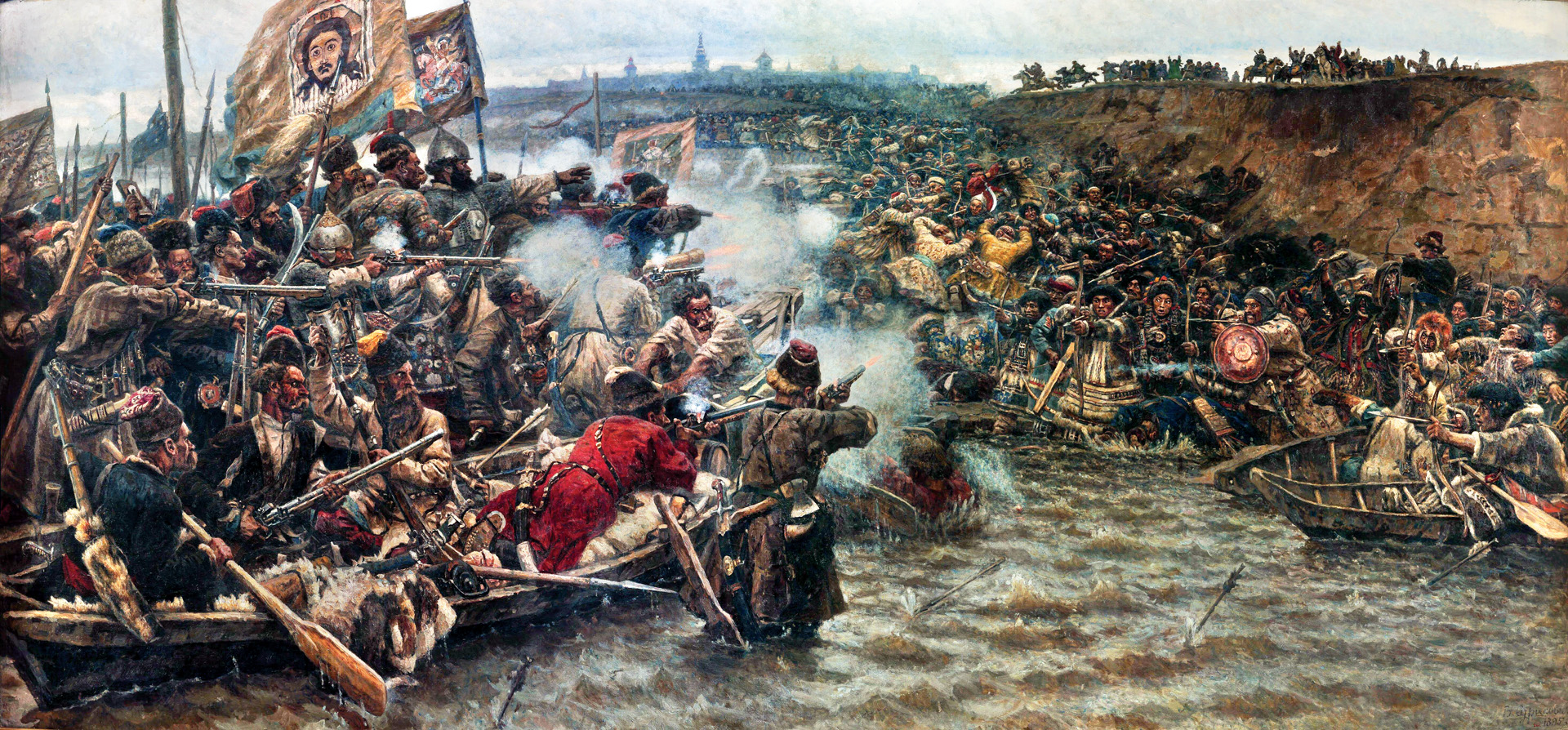
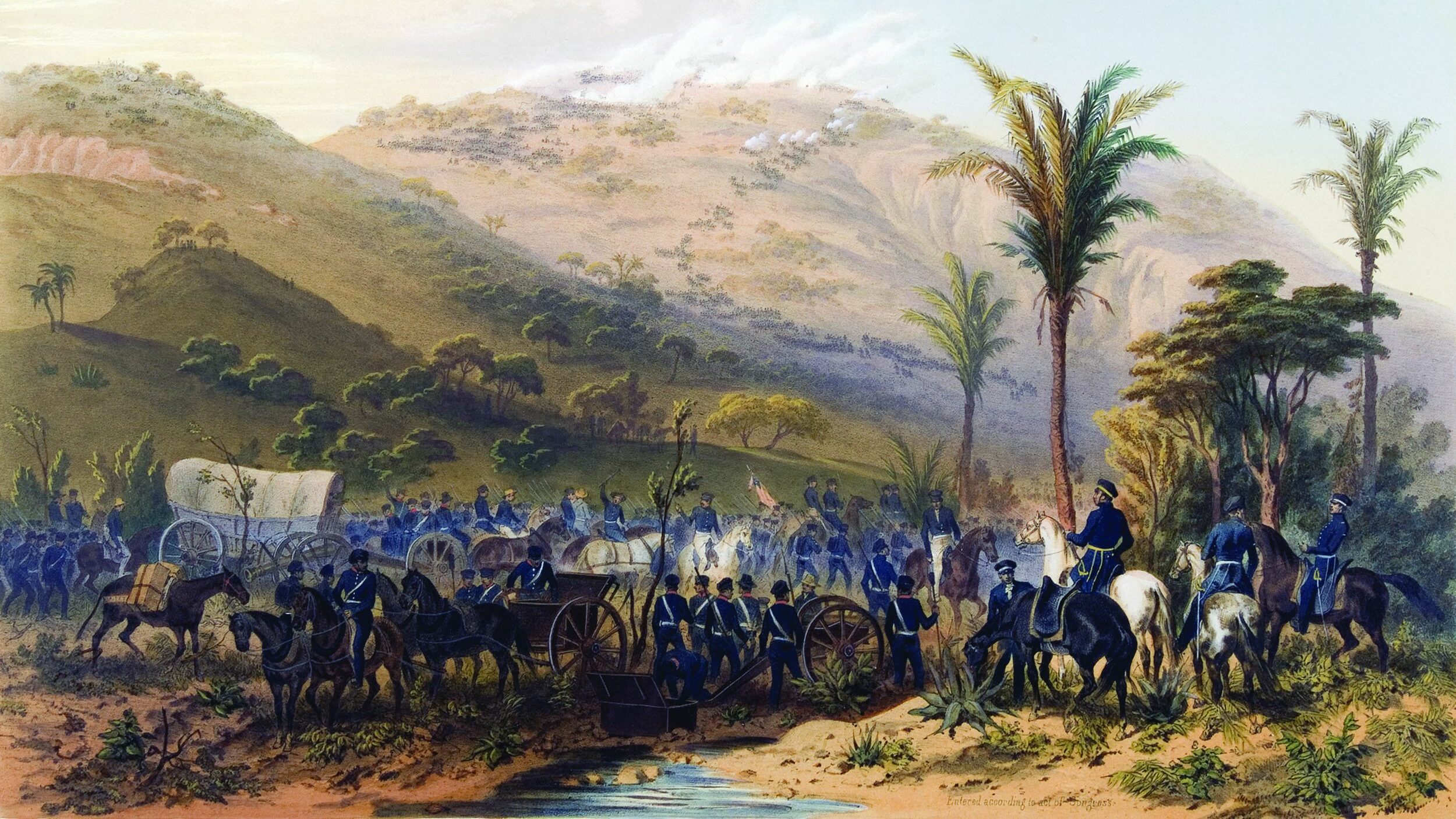
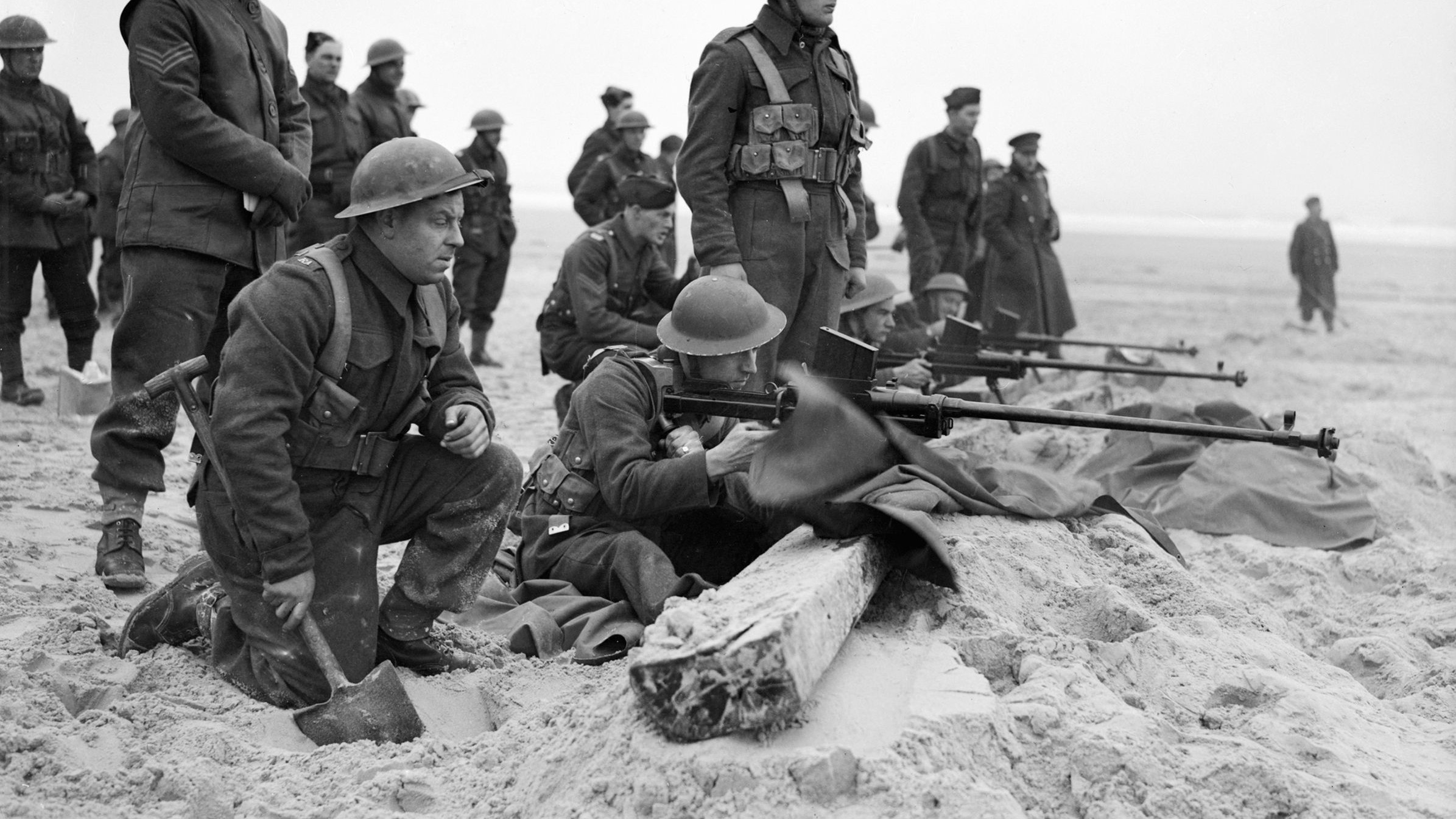
Dear Mr.Krott,
As someone who’s Grandfather belonged to a small Dutch Resistance Group that fought for 6 days against FJR.6 and did research on that Regiment for 37 years, I would like to give my personal opinion about ‘Stösser’ in comparison to all it’s previous operations since september 8 1944.
Greetings Richard Binkhuysen (aka A.C.E. van T.)